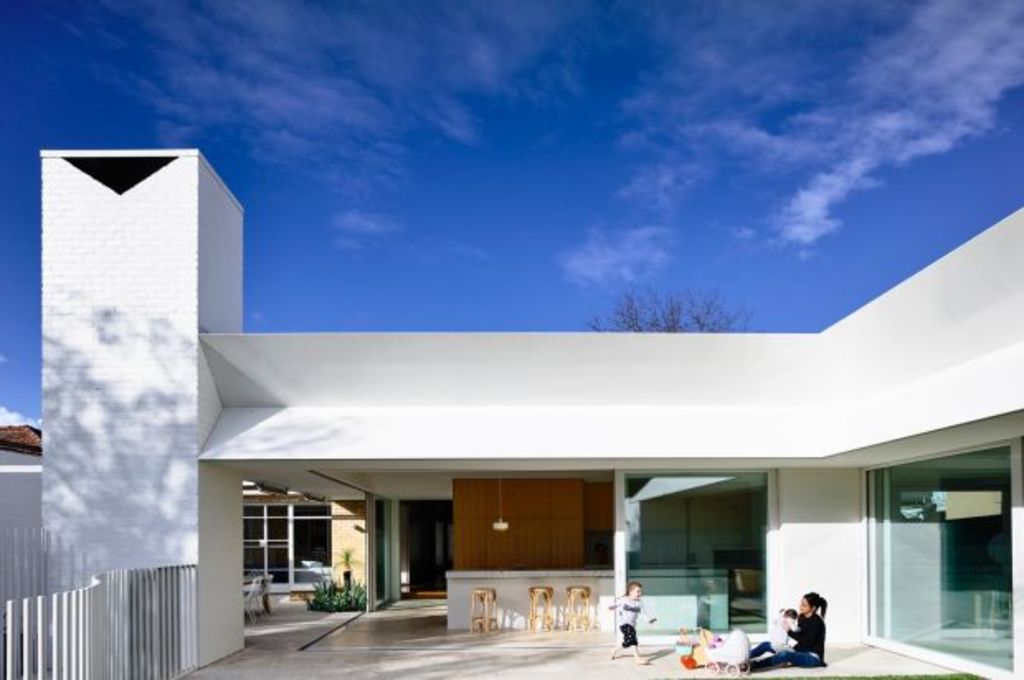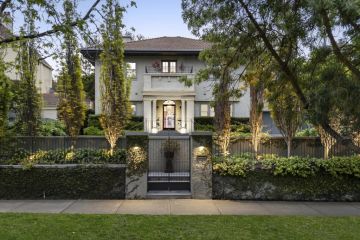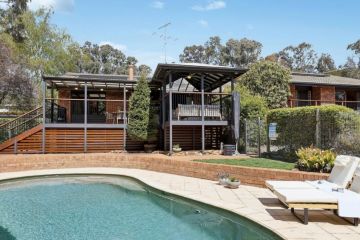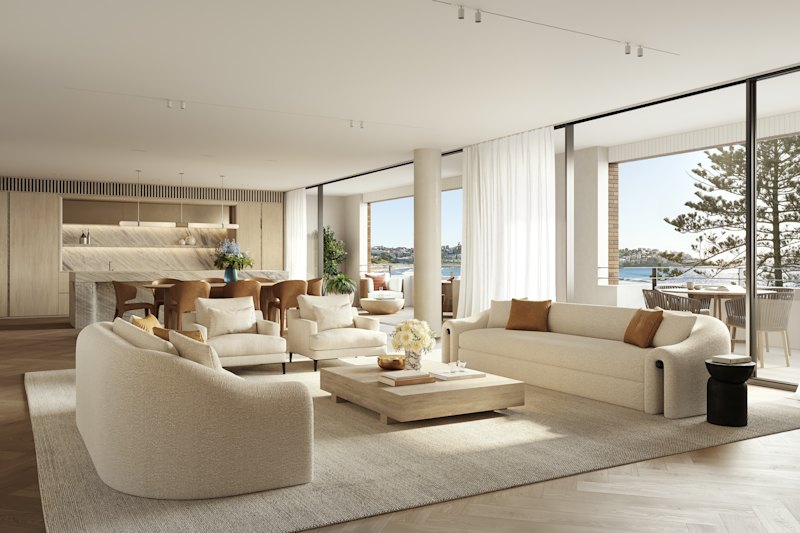Powering up: Victoria's winning women architects

It’s a forward moving force and the energy is palpable. The achievements of Victoria’s women architects are up there for all to see. The girls are showing up in numbers and they are showing up as winners.
At the recent National AIA Architecture awards, two Victorian residential projects – NMBW’s understated and ti-tree-nestled Point Lonsdale House, and Kennedy Nolan’s Deepdene House that pays such respect to its period neighbourhood it has terracotta chimney pots – were two of the four recipients of the Residential Architecture (new) titles.
Of all categories that get attention and gather the most contestants – literally scores of fabulous new Australian homes – “residential new” is the prize to have your name on.
Both of the winning Melbourne practices just happen to have a preponderance of female directors or creatives on board. In fact, Rachel Nolan admits that at Kennedy Nolan, where Patrick Kennedy has been co-partner since 1999, a gender imbalance has only recently been evened out to give him some bloke ballast. “We’ve appointed a lot more graduate men. Before that, it had been a bit lady heavy.”
Two of NMBW’s three co-founders are women – Marika Neustupny and Lucinda McLean, who are also teaching academics. Nigel Bertram is the male co-director of a consistently award-winning business founded in 1997. Bertram was the only man of the four project architects who had a hand in Point Lonsdale.
It’s no coincidence that the empowering years of women in architecture in Victoria have occurred in the arc of one generation. In the late 1980s, only about 21 per cent of Australia’s registered architects were female. By the mid ’90s, women made up almost half the architectural student cohort.
And if, after graduation, they got a run on, the girls have proven so good that if they are not co-directors in committed long-term professional partnerships, where they definitely have equal voice, like Kirsten Thompson, Cassandra Fahey, Melissa Bright of Make Architecture, Clare Cousins, Fiona Dunin, Amy Muir, Karen Abernathy, Delia Teschendorff, Julie Firkin and many others, they can operate under their own increasingly well-known names without it being an odd thing.
Women architects are also crossing out of the domestic design domain to tackle all manner of projects in multi-residential, hospitality, commercial and education. What is a relatively modest, but masterfully sublime commercial project for the across-the-board busy KTA, Kerstin Thompson Architecture, the new cellar door for Tarrawarra Winery, has been widely commended this year.
Of course there are still issues. Pay inequality is glaringly there. It starts as a 6.5 per cent gap at first post graduate employment level and widens to a chasm of around 20 per cent within a couple of decades in practice – unless you happen to be the boss.
A pro-active forum of women architects, operating as Parlour, was founded last year to bring women together to address such problems, and to socialise, debate, creatively cross-pollinate and keep “expanding the space for women in Australian architecture”. Next month Parlour launches Melbourne’s instalment of “Marion’s List” as a register specifically for women architects.
Rachel Nolan reckons the camaraderie between the women operatives is already strong and supportive. “We have lots of role models and mentors and there is a lot of generosity within the peer groups. We are very connected through social media and we have a peer group lunch about three times a year.”
For only the third time in its history, the Victorian chapter of the AIA this year appointed a woman president, Vanessa Bird. The chapter’s current manager is Alison Cleary, and appointed late last year, the current Victorian Government Architect is a woman, Jill Garner. At least half of the state’s talented architectural photographers are women.
It’s all looking like a productive state of play but according to NMBW’s Marika Neustupny, it’s not an even playing field, yet.
While agreeing that women “are more confident and self assertive, and that there are more chances for women to become prominent earlier in their careers”, the life-balance juggle, she believes, becomes more problematic for women as they advance through the levels of the profession, “with children the biggest issue of all”.
“What is exciting me most at the moment,” she says, “is that I’m seeing more and more younger male architects, time sharing (jobs) and wanting to be more flexible for their families, too.” Rachel Nolan agrees, saying “a lot of our crew are in partnerships where both are architects, and the men are also wanting better work/family balance”.
Clare Cousins, who started her studio as a solo practitioner 11 years ago and who now has a staff of nine, five of them female, has a fascinatingly varietal portfolio. She had two entries in the 2016 Victorian AIA residential competition.
Cousins says she doesn’t promote the fact of hers being “a female-led practice. We just see ourselves as architects. But I think clients do occasionally come to us because we’re mainly women”.
Why would that be? I asked all the professionals interviewed for this article whether there was any discernable creative difference between the work of female and male architects and the 100 per cent consensus was “no”. Creative talent is an individual attribute not a gender-determined trait.
“If there is any difference”, says Cousins, “it is generally that women are good listeners and that can make for good architecture.”
Australia hasn’t yet thrown up an international female superstar architect but then there have only been two women – the first being the extraordinary Dame Zaha Hadid who died earlier this year – who have won the Pritzker Prize in the 37 years of it being awarded.
Clare Cousins wonders whether there will be a globally known Australian woman architect in the foreseeable future, especially “when there is now enough interesting work in Australia for us to keep working locally.
“So much interesting work … And we have so much freedom to do good work here because we are a younger nation without the heritage restrictions of, say, Europe.”
If the girls getting their game on so adeptly now is any indicator, the future for the female graduates just about to exit the architecture schools is indeed looking bright.
“I’m extremely optimistic,” says teacher/architect Marika Neustupny. “It will only get better.”
We recommend
States
Capital Cities
Capital Cities - Rentals
Popular Areas
Allhomes
More







